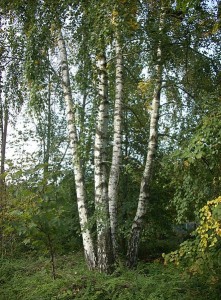
Category: Trees
The Alder Tree
January 11, 2013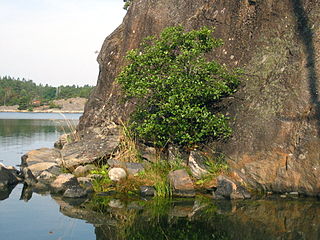
The Yule Fire
November 30, 2012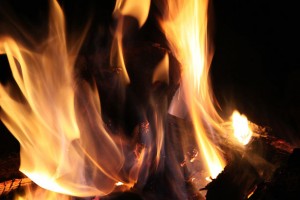 In early December, the equivalent in Pagan households to “Where did we store the Christmas lights?” is “What did we do with the Yule log?” A piece of wood from last year’s Winter Solstice ritual fire is always saved to burn on the next year’s fire. This is a throwback to times when a perpetual fire was burned at the community shrine or temple, and it symbolizes the continuity of tradition.It is the fire and not the log that is the central theme of the Yule ceremony. The hearth fire is the manifestation of the ancestral spirits and the generating force of new human life. According to Clement A. Miles in Christmas Customs and Traditions: “Ancestral spirits, it seems, were once believed to be immanent in the fire that burned on the hearth, and had to be propitiated with libations, while elsewhere the souls of the dead were thought to return to their old homes at the New Year, and meat and drink had to be set out for them.” This sounds a lot like the holy day of Samhain that just passed on October 31st. Euro-Pagan religions which preceded Christianity are essentially systems of ancestor worship, so we would expect the ancestors to play a role in holy days throughout the year. Also keep in mind that Celtic and Germanic cultures absorbed much of the religion already practiced in the regions they settled, and thus there is duplication.In Neolithic European cultures, the hearth was the center of worship, so much so that many objects found in the vicinity of the hearth during excavations are assumed to have religious importance. Greek and Roman writings also identify the hearth as the focus of the family’s spiritual life, and indeed the Latin word for “hearth” is “focus.” Olivia Robertson, co-founder of The Fellowship of Isis, has written “The religion of the Goddess centres around the Hearth. Whether this be the inner sun flaming within the matrix of our earth, or the sun itself, this is the source of manifested life.”Although I frequently reference my symbol encylopedia, interestingly enough I had never until today looked up the entry for “hearth.” The description is short, so I will quote it in full:
In early December, the equivalent in Pagan households to “Where did we store the Christmas lights?” is “What did we do with the Yule log?” A piece of wood from last year’s Winter Solstice ritual fire is always saved to burn on the next year’s fire. This is a throwback to times when a perpetual fire was burned at the community shrine or temple, and it symbolizes the continuity of tradition.It is the fire and not the log that is the central theme of the Yule ceremony. The hearth fire is the manifestation of the ancestral spirits and the generating force of new human life. According to Clement A. Miles in Christmas Customs and Traditions: “Ancestral spirits, it seems, were once believed to be immanent in the fire that burned on the hearth, and had to be propitiated with libations, while elsewhere the souls of the dead were thought to return to their old homes at the New Year, and meat and drink had to be set out for them.” This sounds a lot like the holy day of Samhain that just passed on October 31st. Euro-Pagan religions which preceded Christianity are essentially systems of ancestor worship, so we would expect the ancestors to play a role in holy days throughout the year. Also keep in mind that Celtic and Germanic cultures absorbed much of the religion already practiced in the regions they settled, and thus there is duplication.In Neolithic European cultures, the hearth was the center of worship, so much so that many objects found in the vicinity of the hearth during excavations are assumed to have religious importance. Greek and Roman writings also identify the hearth as the focus of the family’s spiritual life, and indeed the Latin word for “hearth” is “focus.” Olivia Robertson, co-founder of The Fellowship of Isis, has written “The religion of the Goddess centres around the Hearth. Whether this be the inner sun flaming within the matrix of our earth, or the sun itself, this is the source of manifested life.”Although I frequently reference my symbol encylopedia, interestingly enough I had never until today looked up the entry for “hearth.” The description is short, so I will quote it in full:
An omphalos; the interior spiritual centre; the transference of the spirit by fire. The centre of the home; feminine domination; fire in its feminine-earth aspect, but the fire can also take on the masculine aspect with the earth as the feminine; warmth; provision of food. The Vedic round hearth is the earth, the realm of man, while the fire to the East is the realm of the gods. Among South American Indians the hearth-stone is named the ‘bear’, signifying subterranean powers and the point of communication with them. In Celtic countries the cult of the dead centred on the hearth.
I especially like the part about feminine domination.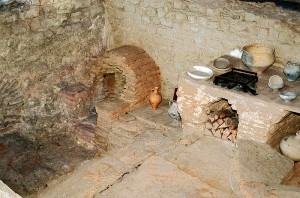
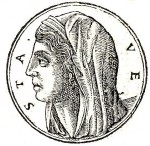
Not Just Any Nuts
November 20, 2012 A little update on my post about the Buckeye Tree, where I made the assertion that school spirit at The Ohio State University is legendary and the enthusiasm for the Bucks has to be seen to be believed. I now offer exhibits A-Z: Ohio State fans, in defense of their team which was banned by the NCAA from bowl game participation this year for financial rule-breaking of coaches and players, actually petitioned Barack Obama for a presidential pardon. “Please exercise your executive power to pardon the NCAA’s excessive sanctions placed on The Ohio State Buckeyes to enable a rightful, satisfying culmination to the college football season for the American people.” Needless to say, this went nowhere. Maybe with all the attention from the past presidential race, Ohio has gotten a bit delusional about the importance of its place in the world. Or maybe faith in the lucky mojo of the Buckeye just won’t quit.
A little update on my post about the Buckeye Tree, where I made the assertion that school spirit at The Ohio State University is legendary and the enthusiasm for the Bucks has to be seen to be believed. I now offer exhibits A-Z: Ohio State fans, in defense of their team which was banned by the NCAA from bowl game participation this year for financial rule-breaking of coaches and players, actually petitioned Barack Obama for a presidential pardon. “Please exercise your executive power to pardon the NCAA’s excessive sanctions placed on The Ohio State Buckeyes to enable a rightful, satisfying culmination to the college football season for the American people.” Needless to say, this went nowhere. Maybe with all the attention from the past presidential race, Ohio has gotten a bit delusional about the importance of its place in the world. Or maybe faith in the lucky mojo of the Buckeye just won’t quit.
Hecate and the Waterway
November 2, 2012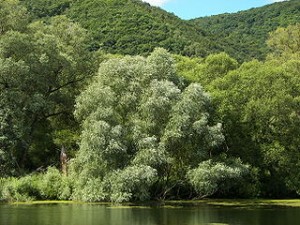

SourcesMonaghan, Patricia. The Book of Goddesses and Heroines. St. Paul, MN: Llewellyn, 1990.Plants for a Future. Salix alba.
Neith and the Acacia Tree
October 20, 2012
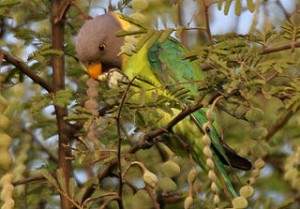
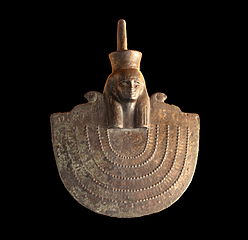
In historical times Neith gained prominence as her city Sais rose in influence during the seventh century BCE, but Neith was probably worshiped in Lower Egypt long before dynasties or agriculture, when people still hunted for food. The crossed arrows on her crown probably originated as a hunting emblem, and may also relate to the defensive stinger of the bee and the defensive thorns on the acacia. Primarily Neith is a goddess of sustenance, engaged in the perpetual creation of life. Out of just one tree she created incense, perfume, wood for implements, seedpods for cattle, pigment binder for ink and paint, materials for embalming and food for bees, not to mention welcome shade in a hot dry climate.SourcesBarrett, Clive. The Egyptian Gods and Goddesses: The mythology and beliefs of ancient Egypt. London: Diamond Books, 1996.Clark, R.T. Rundle. Myth and Symbol in Ancient Egypt. London: Thames and Hudson, 1959.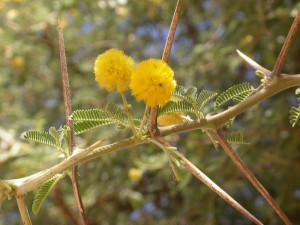
Moving & Changing: A Tree Collage
October 4, 2012Aphrodite and the Myrtle Tree
September 28, 2012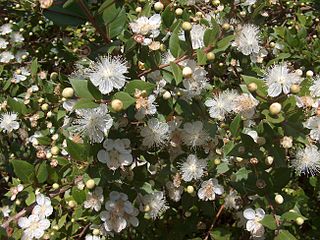

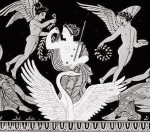
The Sacred Fruit of Persephone
September 21, 2012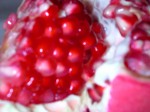 The autumn equinox coincides with the start of the major ceremonies of the Eleusinian mysteries. These ceremonies, which in Greco-Roman times attracted a huge number of attendees from all over the Mediterranean, guide participants into a deeper understanding of Persephone’s descent into the underworld. There are several versions of the myth of Persephone, which is too long to explain in detail here. The gist of it is that Persephone as a maiden goddess or “Kore” is painting flowers in a meadow when the earth opens up and the death god Hades abducts her. He demands that she stay in the underworld with him as his wife and queen and refuses to let her leave. Persephone’s mother Demeter is inconsolable and neglects her duties as mother of vegetation, leaving crops to wither from lack of rain. As the earth becomes more and more parched, the gods become alarmed, and finally the chief god Zeus orders Hades to relinquish his captive. Unfortunately Persephone has eaten a pomegranate seed while in the underworld, and the laws there decree that no one who takes food in the land of the dead may return to the living. Given the urgency of the situation, a compromise is nevertheless reached: Persephone will spend four months of every year in the underworld with Hades and will spend the rest of her time on earth with her mother Demeter. From Apollodorus:
The autumn equinox coincides with the start of the major ceremonies of the Eleusinian mysteries. These ceremonies, which in Greco-Roman times attracted a huge number of attendees from all over the Mediterranean, guide participants into a deeper understanding of Persephone’s descent into the underworld. There are several versions of the myth of Persephone, which is too long to explain in detail here. The gist of it is that Persephone as a maiden goddess or “Kore” is painting flowers in a meadow when the earth opens up and the death god Hades abducts her. He demands that she stay in the underworld with him as his wife and queen and refuses to let her leave. Persephone’s mother Demeter is inconsolable and neglects her duties as mother of vegetation, leaving crops to wither from lack of rain. As the earth becomes more and more parched, the gods become alarmed, and finally the chief god Zeus orders Hades to relinquish his captive. Unfortunately Persephone has eaten a pomegranate seed while in the underworld, and the laws there decree that no one who takes food in the land of the dead may return to the living. Given the urgency of the situation, a compromise is nevertheless reached: Persephone will spend four months of every year in the underworld with Hades and will spend the rest of her time on earth with her mother Demeter. From Apollodorus: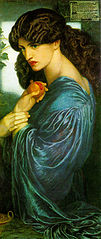
When Zeus commanded Pluto [Hades] to send Core [Kore] back up, Pluto gave her a pomegranate seed to eat, as assurance that she would not remain long with her mother. With no foreknowledge of the outcome of her act, she consumed it… Persephone was obliged to spend a third of each year with Pluto, and the remainder of the year among the gods.
Persephone’s return to the upper world in February coincides with the lesser ceremonies of Eleusis.In addition to explaining the fallow period of the agricultural year, Persephone’s myth is believed to be an account of the merger of the Hellenic (Indo-European) pantheon with a much older one. The rape motif in the story underscores that the Hellenic takeover was a violent one that wrested power from women. In the words of Robert Graves, “It refers to male usurpation of the female agricultural mysteries in primitive times.”The pre-patriarchal Persephone was probably a triple goddess, with the maiden Kore her manifestation in early spring, the mother Demeter her mature aspect, and the queen of the underworld her death aspect. Note that Mediterranean goddesses were rarely depicted as hags or crones, even in their death aspect.Persephone’s symbols are many, but we are confining our attention here to the pomegranate. This tree, which is native to Afghanistan and surrounding regions, has been cultivated for at least 5000 years. It is probable that the fruit was traded even earlier, since pomegranates keep well and their flavor is enhanced during storage. Pomegranate trees grow easily from seed. They thrive in hot, semi-arid conditions, even in poor soil. After the pomegranate flowers, the burgeoning fruit has a pronounced crown. The fleshy red seeds are sectioned by membranes that are cavernous in appearance. The cave is a symbol of both the underworld and the womb. Red is the color of blood, the womb, and birth. Many ancient people in the Mediterranean and elsewhere painted dead bodies with the red mineral ocher to symbolize rebirth. Of course, seeds also symbolize birth, and the plethora of seeds inside the pomegranate make it an emblem of fertility.Provocative symbolism aside, the pomegranate is a useful fruit. The seeds have a pleasant, astringent taste that is not overly sweet. The seeds have long been used to treat tapeworms, and the rind can sooth irritated skin. The rind is also used to dye cloth yellow. The sacred trees of major goddesses usually have a long history of generosity to humans.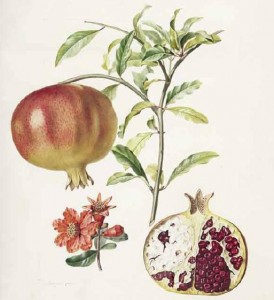
Frigga and the Birch
September 7, 2012

